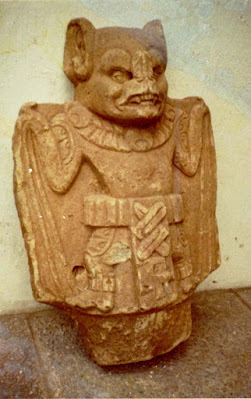SPOOKY
Credit: nature.org
Cloaked in Delusion
Their stark, creepy, and weird looks alongside their unusual habits (i.e., hanging upside down etc.) don’t help their public image.
Unquestionably, they are strange creatures, appearing as half-animal and half-bird - neither one thing nor the other. From this, dualism and strangeness evolved a repute of fallacy and threat.
‘A Bad Wrap’ - Will these tiny living beings ever escape the veil of the fear cast, their persecution throughout history, contributed to by legends and association with legendary ‘human” vampires of Transylvania, graveyards, death, and ghosts?
Do they deserve this sinister reputation, or do they play a more critical role in the world than feeding the dark human fascination for the spooky and the supernatural?
Well overdue, perhaps the time has come to give these fantastic animals their ‘due’, to break and dispel the negative ‘tag’ that has long ‘dogged’ them for centuries.
Credit: scienceboard.net
A Short Chronicle
MYTHS, LEGENDS, FOLKLORE AND SUPERSTITIONS
Many mythological stories, cultural drawings and paintings include bats and humans intertwined, including people turning into bats.
Symbols of death, evil spirits, trickery, the underworld - darkness, associated with death and the supernatural and in league with the devil, the humble, tiny bat can certainly lay its claim to fame.
Presented below are a few different standpoints, good and bad, from around the globe.
The Mayans often talked about bats in their stories, and they even had it coined as the underworld guardian. The ‘House of the Bat’ was the region the soul had to travel through to enter the land of Death. Findings from this early civilization include a human-sized carving of a bat. The Mayans possibly thought they would be less likely to join them by honoring the dead.
Bat sculpture Batz_Isabal_o_Alta_Verpaz_Guillerm0_Mata
Credit: maya-archaeology.org
Painting by David-Teniers-the younger of a witch and a bat-headed demon
Credit: museumofwitchcraftand magic.co.uk
In European and North American cultural folklore, Bats have a long association with witchcraft, including ingredients for medicines and potions. In medieval times some also believed that witches used bats to spy on people. While in old European traditions, seen as creatures of the night they were associated with demons' beliefs and such. Other strange beliefs in European folklore included: carrying a bat’s eye around to become invisible, nailing a dead bat to your door to protect you from demons, and placing a drop of bats blood under a woman’s pillow will help her be fruitful.
The tradition of Halloween gave additional credence to the sinister aspect of bats. Halloween's time was when the veil between this world and the otherworld met (the state, everyday life norms no longer existed). When the borders could cross, and the dead and the underworld's spirits return to visit earth. Bats, being seen as liminal creatures, were believed to cross this barrier, capable of occupying both sides.
In many cultural stories, Vampires emerged from caves, gateways to the underworld. The underworld was associated with the dead, and bats emerge from caves at twilight when day merges into the night. Hence the link.
Bat-Cave
Credit: stlucia.com
In the Western World, the release of the novel Dracula associating vampires with bats further embellished the Bats fearsome reputation.
In Europe strangely perhaps, given its bad press, carrying the dried and powdered heart of a bat in your front pocket was supposed to protect you from bleeding to death – and later to stop bullets.
In China and Japan, the bat is considered a symbol of happiness. In Chinese culture, the bat is also considered the most significant winged creature as it represents good opportunities and fortune (health, wealth, luck, serenity, virtue and long life).
Ancient Egyptians believed that bats could prevent or cure poor eyesight, toothache, fever, and baldness. The bat hung over a home's doorway was thought to prevent demons' entry that carried these ‘diseases.’
Pre-Colombian civilizations in Central America erected Bat gods in homage.
It was not uncommon in Africa and the Caribbean to find Bats used in voodoo worship, which continues even today.
The Apache and Cherokee Indian tribes revered bats and viewed their presence as a symbol that something good was about to happen.
In Shamanism, the bat, a symbol of death and rebirth, is believed to guide people through the dark times of their life.
Bats in the Bible - bats are mentioned three times in the old testament.
Credit: Image by Walter Navarro from Pixabay
Fascinating stuff!
I hope you have enjoyed our little tour through history about these tiny little weird marvels.










No comments:
Post a Comment